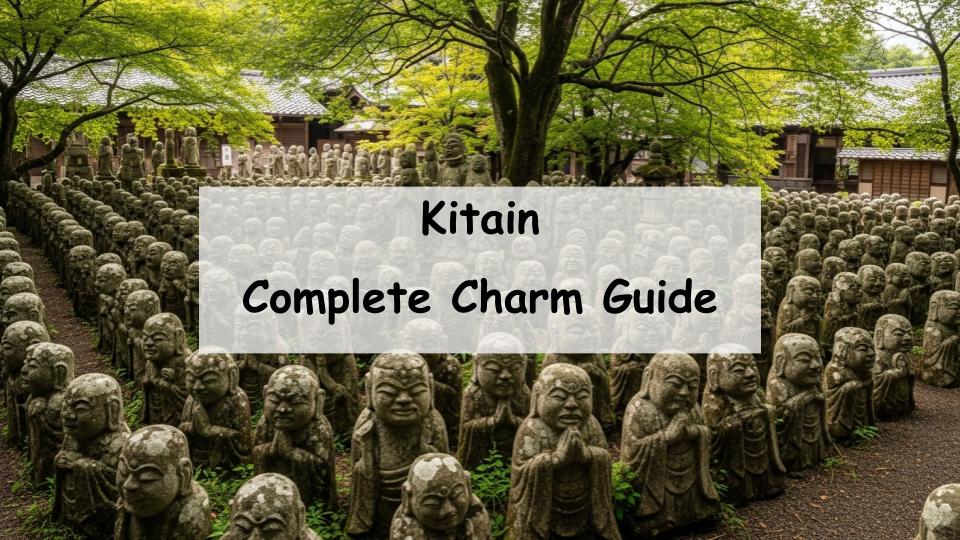Are you wondering, “What kind of temple is Kitain?”, “What historical value does it hold?”, or “What should I see when I visit?” If so, you’re not alone.
To sum it up, Kitain is a historically significant temple with deep ties to the Tokugawa shogunate. It preserves original buildings from Edo Castle and boasts a rich cultural heritage, making it a must-visit for history enthusiasts. Known also as Kawagoe Daishi, Kitain is a sacred site that offers insights into Japanese architecture, Buddhist culture, and Edo-period legacy.
In this article, we will guide you through Kitain’s origins, its architectural and cultural highlights, key attractions you shouldn’t miss, and practical information such as how to access the temple and what to explore nearby. If you’re planning to visit Kitain, this article will provide everything you need to know in advance. Read on!
What is Kitain? History and Basic Information
The Origins and Historical Background of Kitain
Kitain was originally founded in 830 by the monk Ennin (Jikaku Daishi). It gained prominence in the early Edo period when Tenkai, the trusted monk of Tokugawa Ieyasu, was appointed as its head priest. After a major fire in 1638, buildings from Edo Castle were relocated here under Tokugawa Iemitsu’s orders.
The Deep Connection Between Kitain and the Tokugawa Family
Kitain holds a unique position as a temple deeply linked to the Tokugawa family. Many relics and structures in the compound, such as rooms used by Tokugawa Iemitsu, were directly transferred from Edo Castle.
Kitain as “Kawagoe Daishi”
Known affectionately as Kawagoe Daishi, Kitain is a vital religious and spiritual center in Saitama Prefecture. It continues to draw pilgrims and tourists alike, playing an essential role in the region’s religious landscape.
Exploring the Highlights of Kitain
The Guest Hall and Study Hall: Edo Castle Relics
These historically invaluable structures were part of the original Edo Castle. They allow visitors to see and feel authentic Edo-period architectural design and living spaces once used by the shogunate.
The 500 Rakan Statues: Expressive Stone Figures
Kitain is home to over 500 Rakan (disciples of Buddha) statues, each with its own unique facial expression and posture. These figures fascinate visitors and are a highlight of any trip to the temple.
Temple Gate, Bell Tower, and Main Hall
The Approach and Temple Gate
The tranquil temple approach and imposing gate provide a fitting entrance to this sacred space, setting the tone for the entire visit.
Highlights of the Main Hall Interior
The Main Hall houses sacred statues and religious artifacts that convey the spiritual depth of the temple. The architectural details and quiet atmosphere enhance the visitor’s experience.
Cultural Assets and Historical Value of Kitain
List and Description of Important Cultural Properties
Kitain is designated as a holder of several nationally recognized Important Cultural Properties, including temple buildings and historical relics from the Tokugawa period.
The Monk Tenkai and His Connection to Kitain
Tenkai, a pivotal figure in the temple’s history, played a central role in its revival and its political and spiritual influence during the Edo period.
Treasures: Paintings, Statues, and Ancient Texts
Kitain’s museum houses various treasures such as scroll paintings, Buddhist statues, and ancient manuscripts, providing deeper insight into Japanese religious art and scholarship.
Annual Events and Festivals at Kitain
New Year Visits and Purification Ceremonies
During the New Year period, Kitain becomes a bustling destination for hatsumode (first shrine visit of the year) and yakuyoke (bad-luck purification), attracting countless visitors.
Spring Flower Festival and Cherry Blossoms
Spring brings beautiful cherry blossoms to Kitain’s grounds. The Flower Festival during this time is a beloved seasonal event.
Other Annual Ceremonies and Religious Events
Throughout the year, Kitain hosts various Buddhist ceremonies, each rooted in centuries-old tradition and spiritual significance.
Access and Nearby Information
Getting to Kitain by Train or Bus
The temple is conveniently located in Kawagoe, Saitama Prefecture. It’s about a 10-minute walk from Hon-Kawagoe Station on the Seibu Line or Kawagoe Station on the JR Line.
Parking and Directions for Car Access
There is parking available for visitors arriving by car, though it’s recommended to check availability during peak seasons.
Nearby Sightseeing Spots to Visit
Kawagoe Hikawa Shrine, Toki no Kane, and Traditional Storehouses
Kawagoe is known for its Edo-period architecture. After visiting Kitain, you can explore Toki no Kane (Bell of Time), Kawagoe Hikawa Shrine, and the charming Kurazukuri district.
Useful Tips Before Visiting Kitain
Opening Hours, Admission Fees, and Closed Days
Kitain is generally open to the public year-round with a small admission fee. Operating hours and occasional holidays may vary, so it’s wise to check in advance.
Manners and Rules to Keep in Mind
Visitors are asked to respect religious practices, behave quietly, and observe all signs regarding areas off-limits to the public.
Photography Guidelines and Best Spots
Photography is allowed in many areas, but flash or tripods may be restricted in designated spots. The Rakan statues and Edo Castle rooms are especially photogenic.






Comment